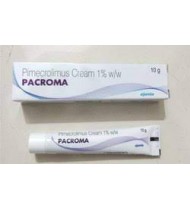Diflorasone Diacetate
Indications
Diflorasone Diacetate cream & ointment are indicated for relief of the inflammatory and pruritic manifestations of corticosteroid-responsive dermatoses.
Pharmacology
Like other topical corticosteroids, Diflorasone Diacetate has anti-inflammatory, anti-pruritic and vasoconstrictive actions. The mechanism of the anti-inflammatory activity of the topical corticosteroids, in general, is unclear. However, corticosteroids are thought to act by the induction of phospholipase A2 inhibitory proteins collectively called lipocortins. It is postulated that these proteins control the biosynthesis of potent mediators of inflammation such as prostaglandins and leukotrienes by inhibiting the release of their common precursor, arachidonic acid. Arachidonic acid is released from membrane phospholipids by phospholipase A2.
Dosage & Administration
Apply to the affected areas as a thin film from one to four times daily depending on the severity of the condition. Occlusive dressings may be used for the management of psoriasis or recalcitrant conditions. If an infection develops, the use of occlusive dressings should be discontinued and appropriate antimicrobial therapy should be instituted.
Safety and effectiveness of Diflorasone Diacetate cream & ointment in paediatric patients have not been established. Paediatric patients are at greater risk than adults of HPA axis suppression when they are treated with topical corticosteroids.
Safety and effectiveness of Diflorasone Diacetate cream & ointment in paediatric patients have not been established. Paediatric patients are at greater risk than adults of HPA axis suppression when they are treated with topical corticosteroids.
Contraindications
Diflorasone Diacetate is contraindicated in those patients with a history of hypersensitivity to the preparation.
Side Effects
The following adverse effects have been reported infrequently with topical corticosteroids. These reactions include burning, itching, irritation, dryness, folliculitis, acneiform eruptions, hypopigmentation, perioral dermatitis, allergic contact dermatitis, secondary infections, skin atrophy, striae and miliaria.
Pregnancy & Lactation
Topical corticosteroids should be used during pregnancy only if the potential benefit justifies the potential risk to the fetus. It is not known whether topical administration of corticosteroids could result in sufficient systemic absorption to produce detectable quantities in breast milk. Therefore caution should be exercised when topical corticosteroids are administered to a nursing woman.
Precautions & Warnings
Systemic absorption of topical corticosteroids may cause reversible hypothalamic-pituitary-adrenal (HPA) axis suppression, manifestations of cushing's syndrome, hyperglycemia, and glucosuria. Patients receiving large dose of a potent topical steroid applied to a large surface area or under an occlusive dressing should be evaluated periodically for evidence of HPA axis suppression by using the urinary free cortisol and ACTH stimulation tests. If HPA axis suppression is noted, an attempt should be made to withdraw the drug, to reduce the frequency of application, or to substitute a less potent steroid.
Therapeutic Class
Other Topical corticosteroids
Storage Conditions
Store in a cool and dry place, protected from light. Do not freeze. Keep all medicines out of the reach of children.
Eczena Cream 10 gm tube
IndicationsDiflorasone Diacetate cream & ointment are indicated for relief of the inflammatory a..
70.48Tk.
Eczena Ointment 10 gm tube
IndicationsDiflorasone Diacetate cream & ointment are indicated for relief of the inflammatory a..
70.48Tk.
Showing 1 to 2 of 2 (1 Pages)


